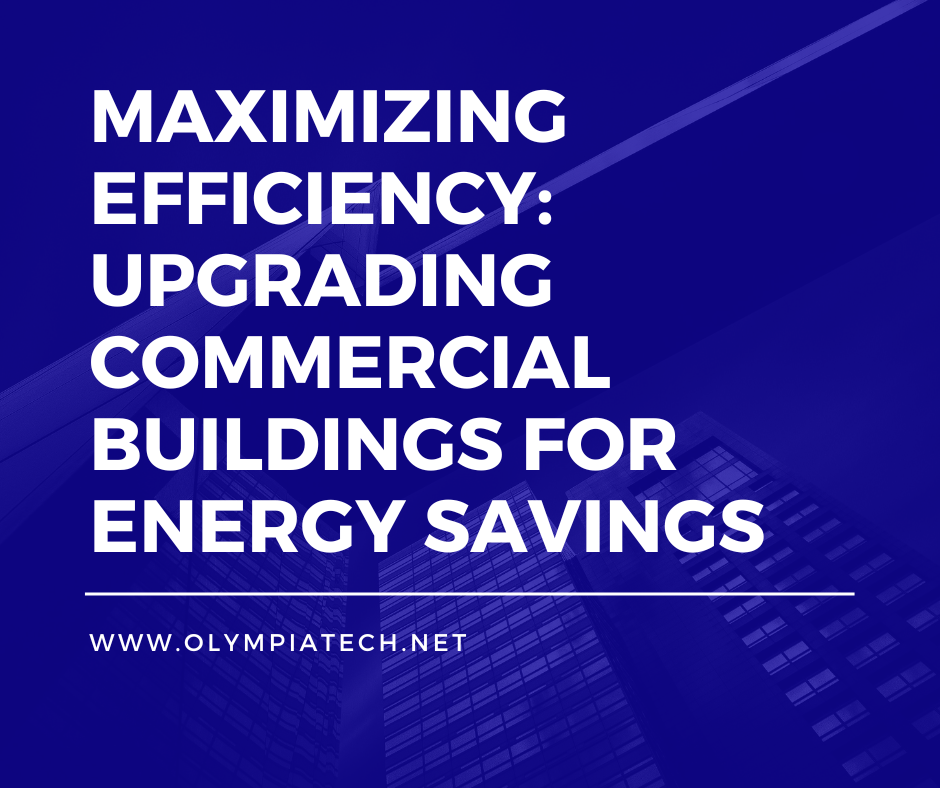
In an era where sustainability is imperative to doing business, the need for energy efficiency in commercial buildings has become increasingly important. From reducing operational costs to meeting environmental regulations and enhancing corporate reputation, there are numerous benefits from optimizing energy usage. Fortunately, advancements in technology and innovative strategies have made it easier than ever for businesses to achieve greater energy efficiency.
Assessment
Before diving into any upgrades, it’s essential for commercial building owners and managers to conduct a thorough assessment of their current energy usage. This includes analyzing utility bills, conducting energy audits, and leveraging data analytics to identify areas of inefficiency. Understanding where and how energy is being consumed lays the groundwork for targeted improvements.
Lighting Overhaul
One of the most impactful upgrades for commercial buildings is transitioning to energy-efficient lighting solutions. Traditional incandescent bulbs are not energy efficient. LED lighting offers significant energy savings while providing superior brightness and longevity. Upgrading to LED fixtures, coupled with smart lighting controls, not only reduces electricity consumption but also enhances occupant comfort and productivity.
HVAC Optimization
Heating, ventilation, and air conditioning (HVAC) systems are major consumers of energy in commercial buildings. Upgrading to energy-efficient HVAC equipment, such as high-efficiency boilers, chillers, and variable frequency drives, can result in substantial energy savings. Additionally, implementing smart HVAC controls and zone-based heating and cooling systems allow for precise temperature regulation, minimizing wasted energy in unoccupied areas.
Building Envelope Enhancements
Improving the building envelope—comprising the roof, walls, windows, and insulation—can significantly enhance energy efficiency. Upgrading insulation, sealing air leaks, and installing energy-efficient windows help maintain a comfortable indoor environment while reducing reliance on heating and cooling systems. Additionally, cool roofs and reflective coatings can mitigate heat gain during warmer months, further lowering energy consumption.
Renewable Energy Integration
Embracing renewable energy sources, such as solar panels and wind turbines, can further augment the energy efficiency of commercial buildings. Installing onsite renewable energy systems not only reduces dependence on grid-supplied electricity but also offers long-term cost savings and environmental benefits. There are also incentives and rebates to make renewable energy investments increasingly attractive for businesses.
Data-Driven Optimization
Harnessing the power of data analytics and building management systems enables continuous monitoring and optimization of energy usage. Real-time data insights allow building operators to identify anomalies, optimize equipment performance, and implement proactive maintenance strategies. Moreover, machine learning algorithms can forecast energy demand patterns, facilitating more informed decision-making for further efficiency improvements.
Conclusion
Investing in energy efficiency upgrades for commercial buildings is not just a matter of environmental responsibility—it’s a strategic imperative for businesses seeking to thrive in a rapidly evolving landscape. By embracing modern technologies, data-driven strategies, and sustainable practices, companies can unlock significant cost savings, enhance operational resilience, and position themselves as leaders in the transition toward a greener future. From lighting and HVAC upgrades to renewable energy integration and beyond, the possibilities for maximizing efficiency are endless—and the rewards are plentiful.

